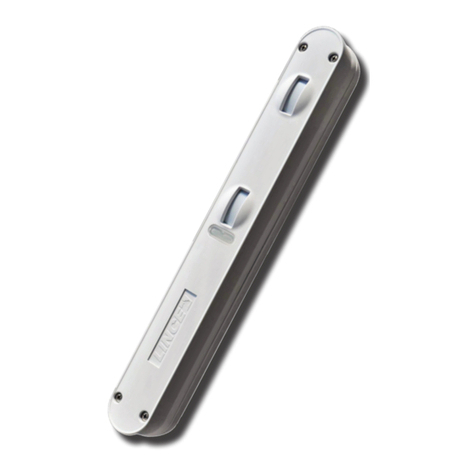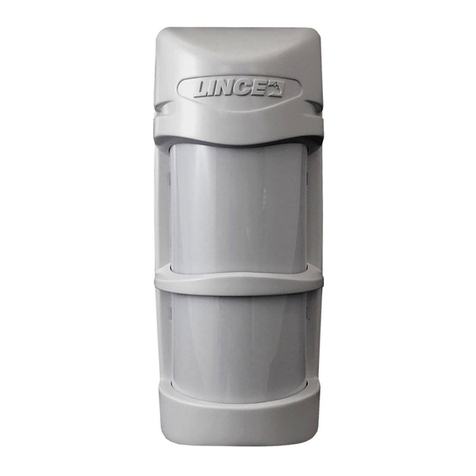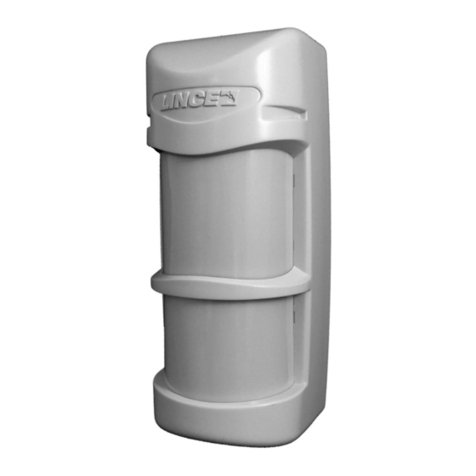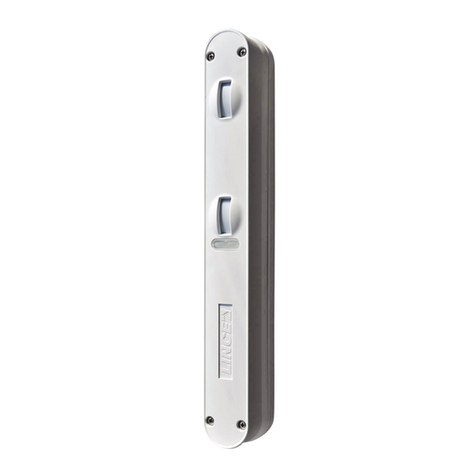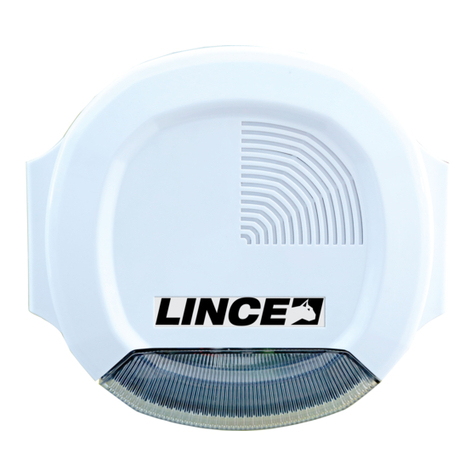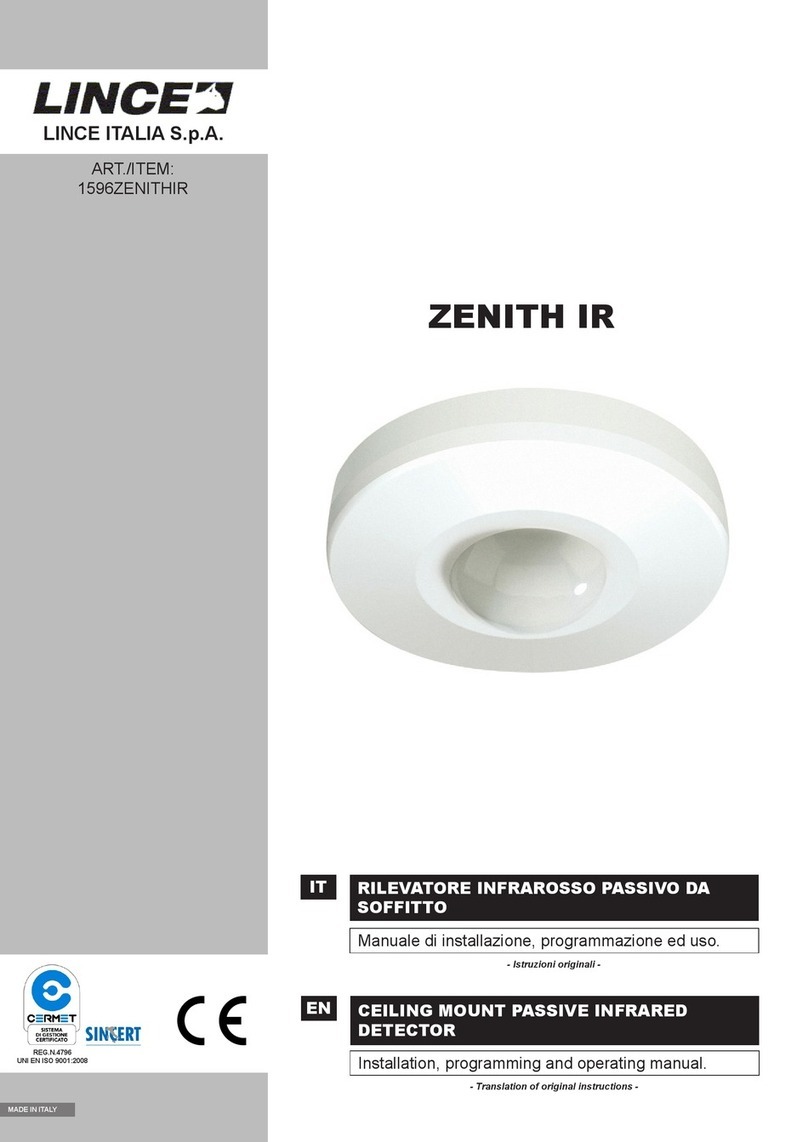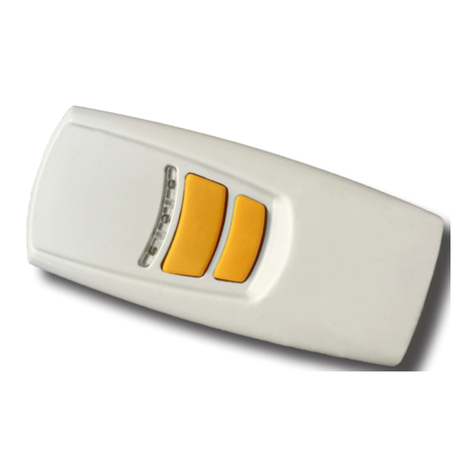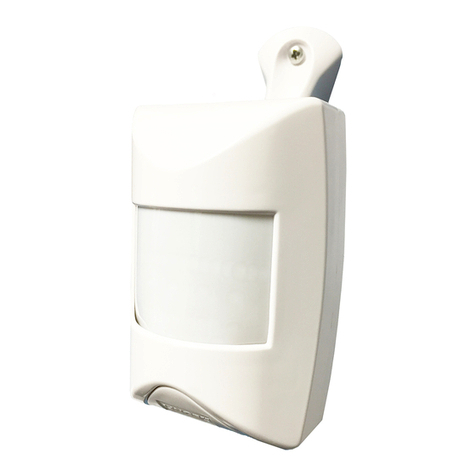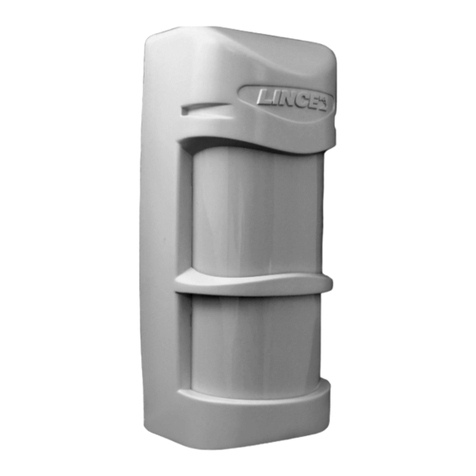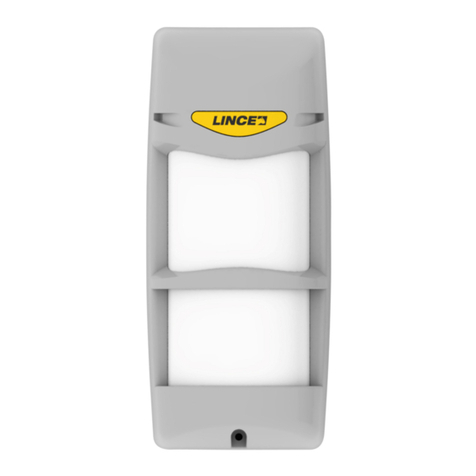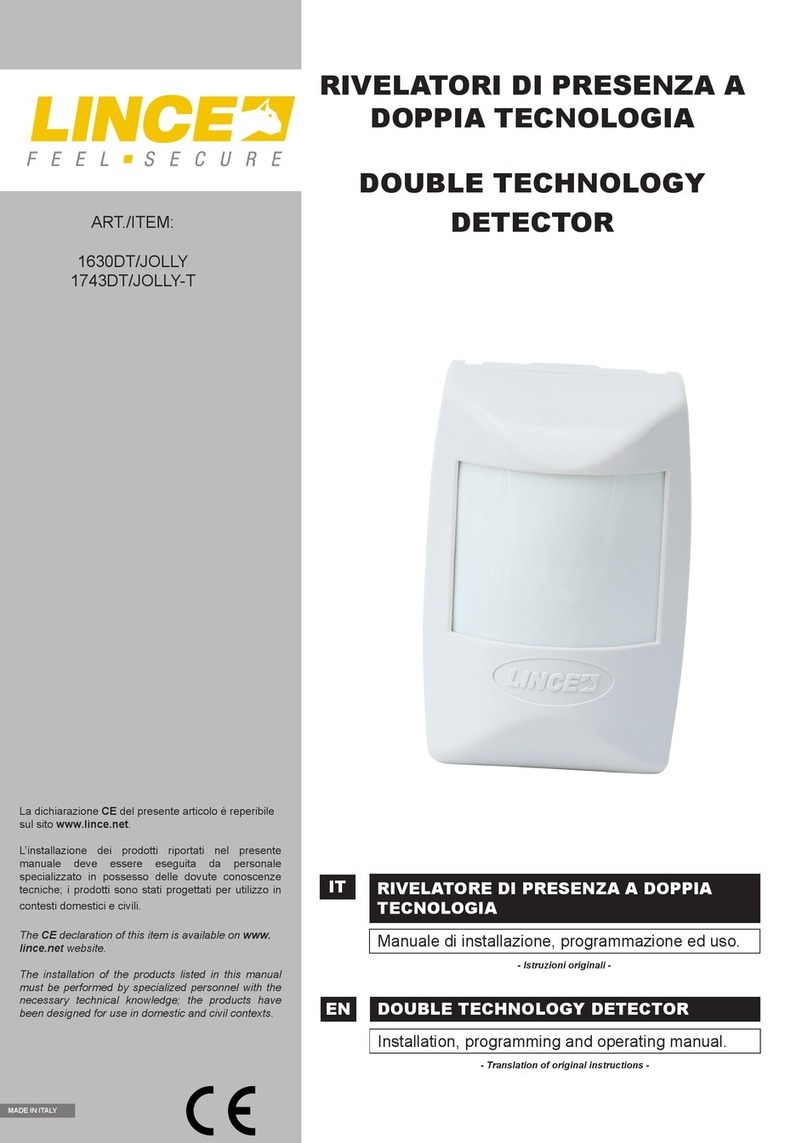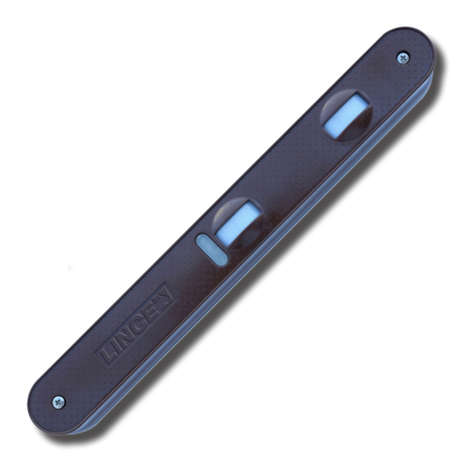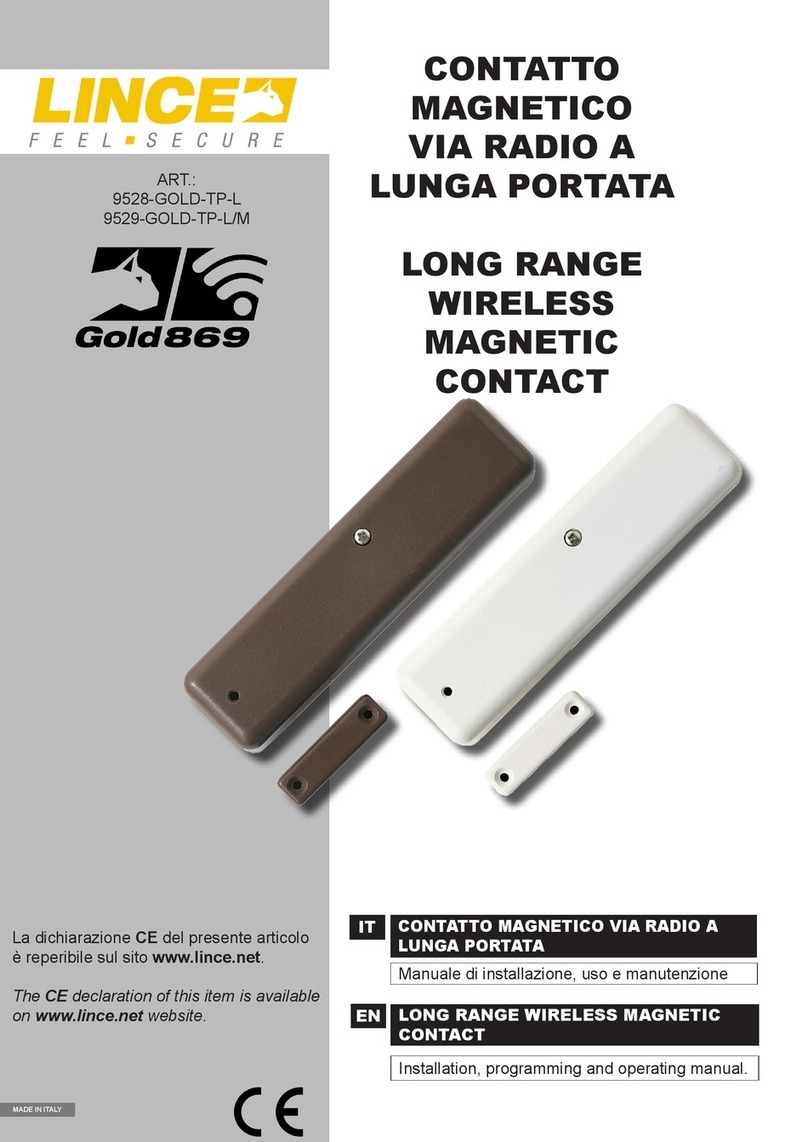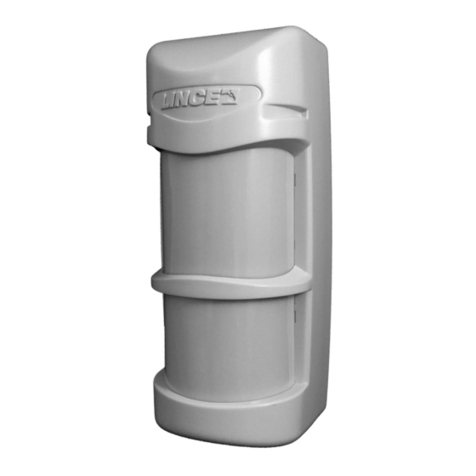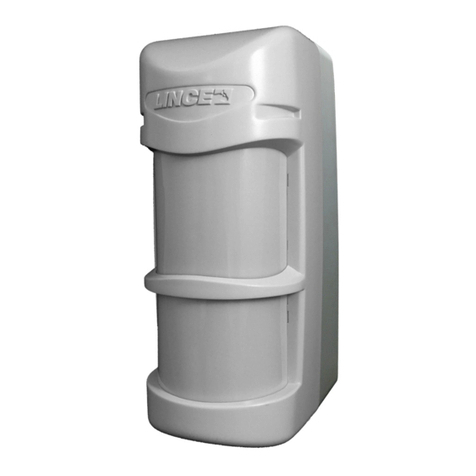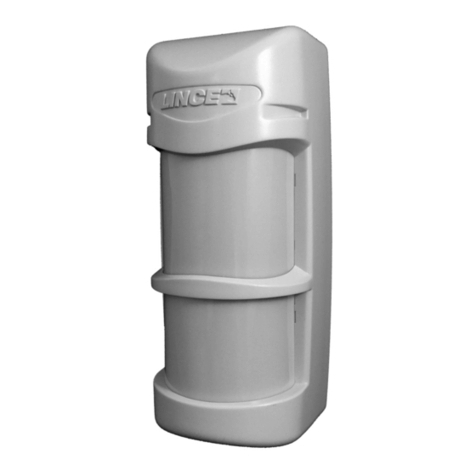
Rivelatore di presenza doppia tecnologia
MADE IN ITALY ART. 1497-1578
Conforme alle normative Cei 79/2 2° ediz.
230603241106 rev 3
DESCRIZIONE Il DTP100 riunisce in un unico dispositivo un sensibile rilevatore a microonda
ed un affidabile sensore ad infrarosso, entrambi gestiti da un potente microprocessore.
Appositamente studiato e realizzato per il funzionamento in ambienti molto difficili , garantisce
un eccellente grado di immunità a fenomeni che in altri tipi di sensori possono causare falsi
allarmi.
La sequenza dei preallarmi forniti dai due sensori in esso contenuti viene opportunamente
analizzata dal microprocessore evitando così che fenomeni esterni come correnti d'aria,
sorgenti di calore, e disturbi di origine elettrica diano luogo ad indesiderati allarmi. La
realizzazione con componenti SMD ha reso possibile ottenere dimensioni ridotte nonostante la
complessità delle funzioni svolte, una maggiore affidabilità del circuito e non ultima una elevata
immunità a disturbi elettromagnetici. Facilmente adattabile a qualsiasi tipo di installazione sia a
parete che ad angolo è dotato di indicatori luminosi per la verifica del corretto orientamento e
regolazioni di sensibilità dei sensori. La programmazione delle funzioni del sensore si effettua
tramite dip-switch.
DESCRIPTION This model combines in only one device a sensitive microwave detector with a
reliable infrared sensor, both managed by a powerful microprocessor. On purpose studied and
realized to guarantee perfect functioning in difficult places, it also guarantees high immunity
against phenomena which in other different devices may cause false alarms.
The sequence of the pre-alarms provided by the two built-in sensors, is duly analysed by the
microprocessor, thus avoiding that external phenomena such as air currents, heat sources, little
animal movements or electric origin troubles, may cause undesired false alarms.
SMT technology has allowed reduced dimensions, although functionality complexity, a high
reliability and high electromagnetic immunity. Suitable both on wall and corner installations, it is
supplied with luminous indicators to check correct orientation and adjustment of sensor
sensitivity. Programmation of the sensor’s functions is made by the dip switch.
INSTALLAZIONE Il DTP 100 offre prestazioni ottimali ed una elevata immunità contro i falsi
allarmi. Anche se più tollerante di altri sensori tradizionali, è consigliabile praticare una buona
installazione attenendosi alle istruzioni. Individuare il punto dove fissare il sensore valutando i
passaggi più probabili e gli oggetti più facilmente asportabili da un eventuale intruso.
L'altezza consigliata è di 2,2 m. Per il fissaggio agire come segue: Togliere la copertura facendo
pressione sugli incastri ( C). Fissare il supporto di fissaggio ( B) con le viti ed il tassello in
dotazione ad un'altezza da terra compresa tra i 2,10 m e i 2,30 m. Fissare il sensore al supporto
e prima di serrare le viti ( A) orientare il sensore secondo le esigenze.
Effettuare i collegamenti, chiudere il sensore facendo attenzione che gli scatti automatici siano
incastrati. Se necessario è possibile eliminare lo snodo di fissaggio ( B) e fissare direttamente il
sensore a parete, o ad angolo usando le preforature previste.
COLLEGAMENTI I collegamenti con il sensore DTP 100 devono essere effettuati con cavo
schermato: collegare lo schermo alla massa della centrale, lasciandolo scollegato su lato
sensore. Se la distanza tra il sensore e la centrale è notevole, assicurarsi che non vi sia caduta
di tensione. Per la descrizione dei morsetti fare riferimento alla seguente tabella:
INSTALLATION The DTP100 offers excellent performances and high immunity against false
alarms. Even if more tolerant than other traditional sensors, it is recommended to effect a good
installation, following the present instructions.
Find an out-of-reach place where to fix the sensor, considering the movements of possible
intruders and the most easily removable objects. Recommended height is 2.2 m. For the fixing
do as follows: Take the cover off by pressing on the joints (C) Fix the fixing support (B) with the
screw and the supplied dowel at a height between 2,10 and 2,30 m. Fix the sensor to the
support and before tightening the screw (A), direct the sensor. Make the connections and close
the sensor paying attention that the automatic clicks are well stuck. If necessary it is possible to
eliminate the fixing articulation (B) and directly fix the sensor to the wall, or at corner by using
the previewed pre perforations.
CONNECTIONS Connections with the DTP100 sensor shall be done with shielded cable:
connect the shield to the control panel ground, keeping it disconnected on the sensor side. If
distance between the sensor and the control panel is considerable, make sure no power loss
may happen. For terminal description , refer to
the following schedule:
WT
Morsetto per l'esclusione a distanza dei led di allarme, e abilitazione memoria
(vedi paragrafo Esclusione led ed abilitazione memoria).
Terminal for remote exclusion of the alarm leds and memory enabling (see para.
“Leds exclusion and memory enabling)
AS Contatti dello switch antisabotaggio (8) Normalmente chiuso: Collegare questi
morsetti alla linea antisabotaggio
Tamper switch contacts (8) NC: Connect these terminals to the tamper line
NC Contatti del relé di allarme Normalmente Chiuso: Collegare ad una linea di
allarme
NC alarm relay contact: connect to an alarm line
AC Contatto relè N.C. dell’antimascheramento. Si apre quando il sensore attiva
l’allarme Antimask e Warning.
NC relay contact: Antimask. It opens when the sensor activates the Antimask
and Warning alarm.
+ / - Morsetti di alimentazione 12V , 34mA, quando il sensore viene alimentato
impiega circa 60 sec. Per stabilizzarsi.
Power terminal: 12V 34mA. Once the sensor is powered it takes 60 sec. to
become stable.
Technical features
Infrared sensor Low noise double element
Microwave frequency 10,525 Ghz strip line
Circuit realization SMT with microprocessor
Range 15 / 23 mt
Power From 8 to 16 Volt dc
Absorption 34 mAh
Alarm relay N.C. silent 10 Ωseries
Installation Wall
Antitamper switch N.C. Contact
AND/OR function Yes
ANTIMASK function Yes
WARNING function end MEMORY Yes
Operating temperature -10° +50° C
Dimensions (mm LxHxB) 71x102x56 without articulation
Weight 106g
Caratteristiche tecniche
Sensore infrarosso Doppio elemento a basso rumore
Frequenza microonda 10,525 Ghz strip line
Realizzazione del circuito SMT con microprocessore
Portata 18 / 23 m
Alimentazione da 8 a 16 Volt cc
Assorbimento 34 mAh
Relè di allarme N.C. silenzioso 10 Ωin serie
Installazione Parete
Switch antisabotaggio N.C. contatto dedicato
Funzione AND/OR SI
Funzione ANTIMASK SI
Funzione WARNING e MEMORIA SI
Temperatura di funzionamento -10° +50°C
Dimensioni (mm LxHxP) 71x102x56 senza snodo
Peso 106g
C
B
A
